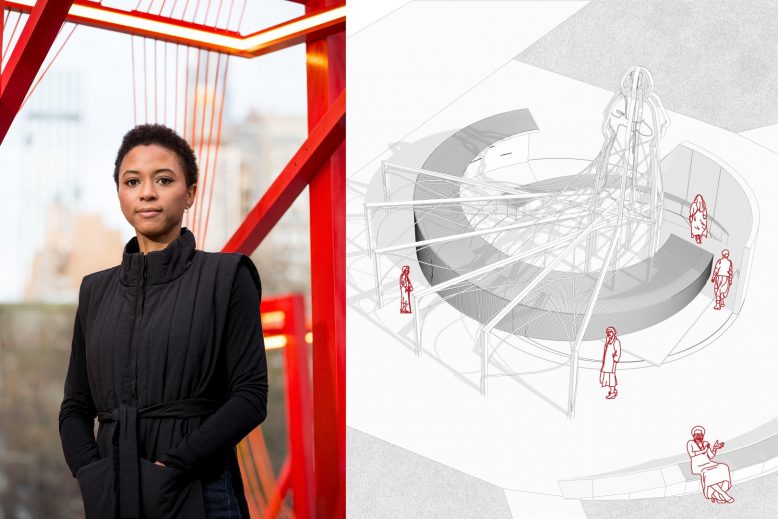
Nina Cooke John hopes that visitors to her groundbreaking memorial to Harriet Tubman in Newark will see themselves in the image of the famous abolitionist.
“If you can see yourself in this heroic figure, then you can see a path to heroic deeds,” says the Montclair-based architect.
Her design, Shadow of a Face, beat out 200 other entries the city received as part of its national competition for a Tubman memorial in October 2020. The central feature of the memorial is a commanding abstract steel silhouette of Tubman with a flowing cape that stands about the same height as the Christopher Columbus statue that it is replacing. The memorial features a circular learning wall with a timeline of Tubman’s life, a mosaic portrait of her face, and an abstract silhouetted figure of her at the center.
The monument is slated to be formally unveiled in Newark on March 11, 2023. An all-day community celebration at the Newark Museum of Art will coincide with the unveiling.
In June 2020, the city removed Columbus’s statue from what was then Washington Park and renamed it Harriet Tubman Square, amid national protests of the police killing of George Floyd in Minneapolis that May.
Cooke John says she wants the monument to be something that visitors can connect with. Tubman risked her life leading enslaved people to freedom and spying for the Union during the Civil War, but the architect also wanted to convey her quieter and more relatable acts of heroism, like using her earnings as a domestic worker in Cape May to help newly liberated people begin their lives in freedom.
[RELATED: How Cape May’s Harriet Tubman Museum Came to Be]
The result is an artistic and educational homage to the noted conductor of the Underground Railroad, which traveled through Newark.
“It should feel like a place, a destination, but also like a community gathering,” where people can do everything from give poetry readings to lay down their troubles, says Cooke John, who is a member of the Black Artists + Designers Guild Collective and was recently named one of Elle Decor’s A-List top 100 designers.
Visitors can get up close and personal with Tubman on the foundational learning wall, which includes a timeline of her life, the names of safe houses around New Jersey, and her enlarged profile crafted in a mosaic of interlocking tiles at eye level.
“I wanted it to be structured in a way so that people can’t help but touch it,” Cooke John says of her monument.
As a way of engaging the community in the project, she held workshops around the city, inviting Newark residents to “put their liberation stories on a tile,” she says. Participants were supplied with pieces of wet clay and the prompts, “What does Harriet Tubman mean to you?” and “What does liberation mean to you?” Responses were collected on 450 tiles that are now included in the mosaic wall and throughout the monument.
Participants were also invited to record their stories in sound booths set up at the Newark Library. Audible, also located near Tubman Square, helped to capture community voices, which are broadcast around the monument.
“I imagine it not only being a place that you come to learn about Harriet Tubman, but to connect to her on a more spiritual level,” Cooke John says.



